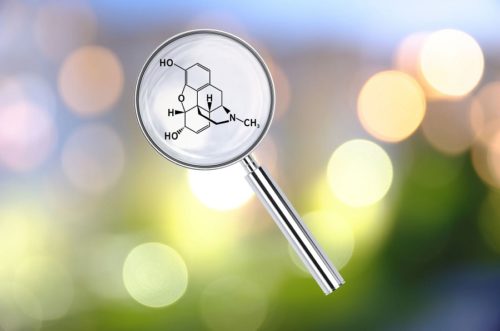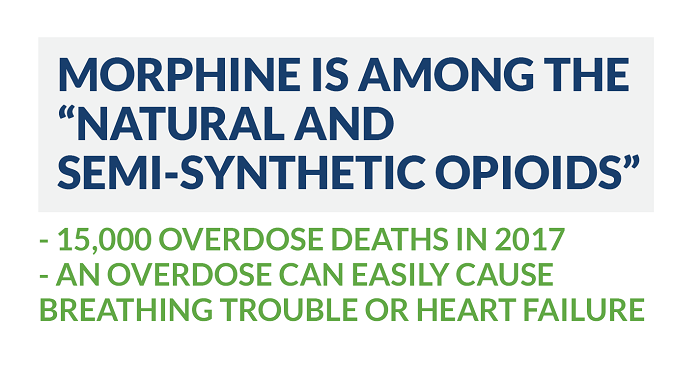Read the latest and greatest from our team
of incredible specialists.

Beach House Recovery Center » Blog » Morphine Treatment and Rehab
Morphine is a potent opiate used for the treatment of severe pain, usually post-surgical or cancer-related pain management. Due to its highly addictive, psychoactive properties, morphine is classified a Schedule 11 narcotic by the Drug Enforcement Administration (DEA) and is widely abused.
Although morphine is a naturally occurring derivative of the opium poppy plant with a rich medical history, modern pharmaceutical and illicit varieties are dangerous— especially when mixed with other drugs or sold on the street in impure form. Morphine is available as a tablet, syrup, injection, or suppository, and users also smoke or snort the drug in order to achieve a more immediate high.
Morphine is a major part of a criminally profitable and socially popular epidemic that is ravaging the nation and undermining public safety and health. According to the Centers for Disease Control and Prevention (CDC), morphine is the third leading cause of emergency room visits. In 2015, morphine resulted in 6,345,800 total prescriptions, and in 2016, 64,070 people died from drug overdoses—primarily opiates. In other words, more Americans died from opiates than they did in the Vietnam War.

Morphine achieves its euphoric effects by interacting with opiate receptors in the brain and throughout the central nervous system (CNS). Over time, this artificial manipulation of brain chemicals, including dopamine and serotonin, creates physical dependency.
Although all opiates work through a similar mechanism, morphine’s alteration of dopamine and serotonin levels—the brain’s natural “feel good” chemicals—is perceived as highly desirable by users who enjoy its euphoric effects and pain-reducing properties. Exact symptoms of morphine addiction vary widely depending upon individual neurochemistry and length and/or quantity of use. Physical symptoms may include:
Psychological symptoms of morphine addiction include heightened anxiety, extreme euphoria and memory problems.

Morphine addiction invariably results in withdrawal symptoms when the drug is not regularly taken, or even slight lapses in use occur. Morphine withdrawal can be quite severe depending upon the level of addiction involved. In some cases, it triggers precipitated withdrawal— a sudden onslaught of symptoms that can turn deadly if not treated in time.
Morphine addiction typically produces withdrawal symptoms that occur in as few as six to 14 hours following dosage, and last up to 72 hours. Physical withdrawal symptoms may include:
Psychological withdrawal symptoms include dysphoria, uncontrollable anxiety, panic attacks, and restlessness. In the majority of morphine users, psychological withdrawal symptoms typically last much longer than physical symptoms. In fact, as part of the post-acute withdrawal process (PAWS), they can linger for months or even years.
Professional treatment and rehabilitation is critical for those suffering from morphine addiction. Reputable treatment facilities are staffed with highly qualified medical professionals and licensed clinicians who specialize in safely, effectively managing the detox and withdrawal process. In addition to providing comprehensive physical and psychological evaluation, ongoing symptom monitoring, and evidence-based therapy, professional treatment helps minimize the risk of relapse and offers invaluable social support.
Due to the serious, lasting effects of morphine addiction, self-guided detox or at-home treatment are never recommended and carry unnecessary risks. In some cases, self-guided detox results in a trip to the emergency room (ER) and may even cause a coma and/or death. Professional morphine detox provides the basic pillars of support necessary for users to break free from their addiction and live a healthy, functional life— without the heightened risks associated with self-treatment.
Morphine treatment is available in a multitude of options— all of which are appropriate for users battling different stages of addiction. These include:
Regardless of which initial treatment option a user chooses, it is important to remember that morphine recovery is a long-term process, with challenges and difficulties lasting well beyond the duration of professionally guided treatment. Merely completing a month-long inpatient detox and attending several months of subsequent intensive outpatient treatment (IOP) is not always sufficient to guarantee sobriety and prevent relapse— hence the need for an ongoing commitment to a healthy recovery lifestyle.
The cornerstone of professional morphine treatment is Food and Drug Administration (FDA) approved medications combined with behavioral therapy. The following primary pharmacological interventions are supported by an abundance of clinical evidence and have revolutionized opiate addiction treatment industry-wide:
During the course of treatment, additional medications may be prescribed in order to treat co-occurring disorders like anxiety and depression that are precipitating or exacerbating factors in morphine addiction. Client-specific therapy is also included in the treatment regimen in order to help resolve trauma, identify behavioral challenges, and reinforce positive coping skills. Under the umbrella of life skills therapy, which includes the fundamental skills and abilities needed to function responsibly and autonomously, clients may receive the following evidence-based therapies:
If you or someone you love is struggling with morphine addiction, call a substance abuse professional today and begin exploring treatment options. Although clients commonly worry about insurance coverage and out-of-pocket expenses, most receive partial, if not total, coverage and are able to receive the help they need. Even in cases where adequate insurance coverage is denied, reputable facilities may be willing to discuss alternative arrangements.
Morphine addiction knows no personal or professional boundaries. Anyone, at any time, can find themselves addicted to morphine and in need of treatment. Admitting the need for help should never be considered a shameful or embarrassing weakness, but rather a potentially life-saving strength.
Finally, morphine overdose is considered a medical emergency to be treated at your local ER room. If in doubt, never delay and take immediate action— the difference between life and death may depend on it.
For more about morphine addiction and recovery, check out these related articles:
Sources:
The Scientific World Journal. Morphine for the Treatment of Sickle Cell Disease. Aug, 2015.
The Journal of Pain. Cognitive-affective and somatic side effects of morphine and pentazocine. March, 2005.
Journal of Clinical Oncology. Strategies to Manage the Adverse Effects of Oral Morphine: An Evidence-Based Report. Sept, 2001
World Journal of Anesthesiology. Intrathecal morphine for postoperative analgesia: current trends. Nov, 2014.
Whether you’re researching for yourself or a loved one, Beach House can help. We understand that this is a serious time in your life and that the treatment center you choose matters. We want you to feel comfortable and empowered to make the right decision for yourself, a friend, or a family member. This is why a counselor is waiting and available to answer your questions and help put your mind at ease regarding the next steps. Many of the staff at Beach House have walked in your shoes. If you feel you’re ready or want more information about how to help a loved one, we can help today. You can also learn why we are voted the #1 rehab for addiction treatment in Florida.
We accept most major insurance plans and can verify your benefits quickly and confidentially.
We’re committed to helping you access the care you need, our admissions counselors can guide you through your coverage options and available resources.





"*" indicates required fields